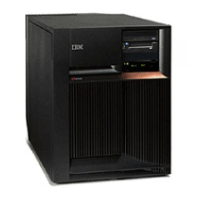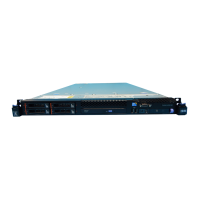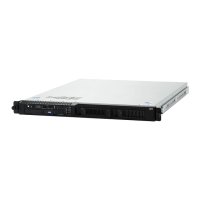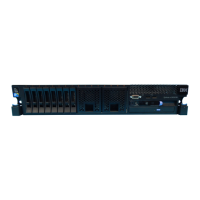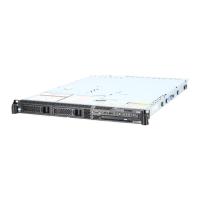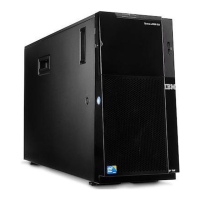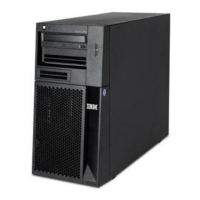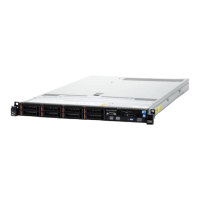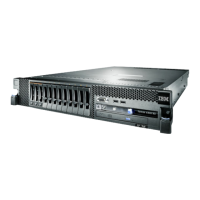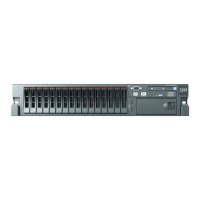3) Time
4) FRU list (choose the Display the failing item information option to display
the SAL entry). Use the Additional Details function to switch between
part descriptions and part locations information.
Notes:
a. All new entries in the Service Action Log represent problems that require a
service action. It may be necessary to handle any problem in the log even if
it does not match the original problem symptom.
b. The information displayed in the date and time fields are the date and time
for the first occurrence of the specific system reference code (SRC) for the
resource displayed during the time range selected.
Did you find an entry in the Service Action Log?
No Yes
↓ Go to step 4 of this procedure.
2. Is the OS/400 operating system available?
Yes No
↓ Go to “Handling Problems for Non-critical Resources” on page 13.
This ends the procedure.
3. Go to “Using the Problem Log” on page 12.
This ends the procedure.
4. Was the entry isolated (does the letter ″Y″ appear in the Isolated column)?
Yes No
↓ Go to “Chapter 2. Unit Reference Codes” on page 59. Using the SRC
that is indicated in the log, find the correct SRC table and unit reference
code. Perform all actions in the ″Description/Action″ column before
exchanging failing items.
Note: When exchanging failing items, the part numbers and locations
found in the Service Action Log entry should be used.
This ends the procedure.
5. Display the failing item information for the Service Action Log entry. Items at
the top of the failing item list are more likely to fix the problem than items at
the bottom of the list.
Some failing items are required to be exchanged in groups until the problem is
solved. Other failing items are flagged as mandatory exchange and must be
exchanged before the service action is complete, even if the problem appears to
have been repaired. Use the ″Part Action Code″ field in the SAL display to
determine if failing items are to be replaced in groups or as mandatory
exchanges. Unless the ″Part Action Code″ of a FRU(s) indicates group or
mandatory exchange, exchange the failing items one at a time until the problem
is repaired. Use the help function to determine the meaning of Part Action
Codes. After exchanging items, verify that the item(s) that were exchanged
repaired the problem.
Notes:
a. For Failing Items (FIs) and symbolic FRUs, go to “Chapter 3. Problem
Isolation Procedures (PIPs), Failing Items, and Symbolic FRU Isolation” on
page 277.
Starting Point
10
iSeries Model 830, 840, SB2, and SB3 Problem Analysis, Repair and Parts V5R1
